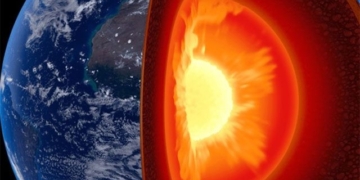Using tree ring data from the Northern Hemisphere, experts estimate global temperatures dating back to the 1st century and note that summer 2023 was record-breaking hot.
2023 has become the hottest year globally since 1850, when temperature recordings began. However, a new study published in the journal Nature on May 14 reveals that human-induced climate change has pushed the summer temperatures of 2023 in the Northern Hemisphere to the highest levels seen in the past 2,000 years.

A mirage appears on Kartavya Road in New Delhi, India, due to the intense heat in April 2023. (Photo: Raj K Raj/Hindustan Times).
“We should not be surprised. To me, this is just a continuation of what we have initiated by releasing greenhouse gases – the very cause of global warming,” said Jan Esper, the lead author of the study and a climate professor at Johannes Gutenberg University in Germany.
Trees provide a snapshot of past climates as they are highly sensitive to changes in rainfall and temperature. This information is preserved in tree rings: during warm, wet years, the tree rings are wider than in cool, dry years.
The research team utilized tree ring data from sites across the Northern Hemisphere to estimate global temperatures from the 1st century to 1850, before modern observational tools were developed. According to the cautious estimates by scientists, 2023 is at least 0.5 degrees Celsius hotter than the warmest summer in the Northern Hemisphere during that period, the summer of 246. If broadly estimated, the temperature difference could be as much as 1.19 degrees Celsius.
Co-author of the study, Max Torbenson, noted that 25 out of the last 28 years have surpassed the highest temperature recorded in the summer of 246. Meanwhile, the coolest summer in the last 2,000 years was nearly 4 degrees Celsius lower than the summer temperature of 2023 in the Northern Hemisphere, attributed to a significant volcanic eruption.
Scientists indicated that volcanic activity could also provide cooler conditions in the future, but ultimately, human greenhouse gas emissions will continue to trap heat in the atmosphere. A volcanic eruption in 1991 helped mitigate the effects of El Niño – a weather system that warms the Pacific Ocean and can cause global temperature increases – in 1992. After the effects wore off, temperatures surged again in 1998. The new study states that this was one of the hottest summers following the summers of 2023 and 2016 – both years featured El Niño events.
Esper emphasized that the only way to curb rising temperatures is to immediately begin reducing emissions. “The longer we wait, the more difficult and costly this will become,” he commented.


















































